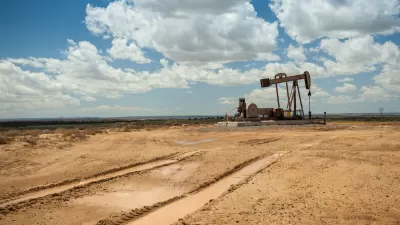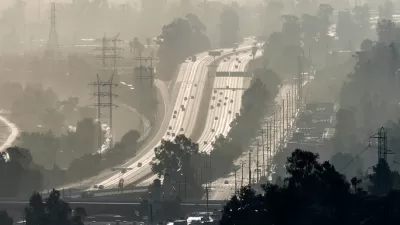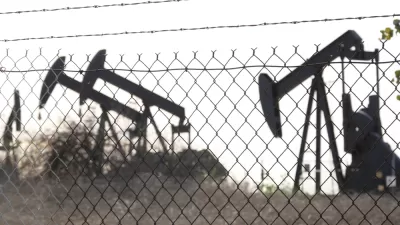The Department of Public Health recommends taking action to better protect residents from oil operations that are sometimes only a few feet from where people live, work, eat, play and study.

There are more than 5,000 oil wells scattered across Los Angeles County, with more than 3,000 of them active, and at least some of them located within a few feet of homes, restaurants, schools, parks, or other public areas.
A new report from the county Department of Public Health suggests the urban wells negatively impact the health of those who spend time near them, and recommends increasing regulation to mitigate those effects.
From KPCC:
"The study comes at a time when oil and gas companies in greater Los Angeles are under increasing pressure from environmental justice organizations who question whether it make sense to continue oil extraction in dense, urban areas — and whether the practice aligns with the state's climate goals."
For many years, there has been ample anecdotal evidence—including an incident several years ago when EPA officials became ill after touring a site—that living near the wells causes "nose bleeds, headaches and difficulty breathing," but officially studying the issue has been challenging because it's difficult to determine what is caused by air pollution from the wells, and what is caused by air pollution from everything else.
A recent study from Occidental, however, found "heightened rates of asthma in densely populated Los Angeles neighborhoods located near active oil-development sites."
And, according to KPCC, "the City of Los Angeles is currently studying the public health benefits and economic consequences of phasing out oil wells around schools, houses and other public places."
"Uduak-Joe Ntuk, the city’s petroleum administrator, said he would use the county’s report in his analysis, but had no word on when it would be completed."
FULL STORY: LA County isn’t doing enough to protect people living near oil wells, study says

Study: Maui’s Plan to Convert Vacation Rentals to Long-Term Housing Could Cause Nearly $1 Billion Economic Loss
The plan would reduce visitor accommodation by 25,% resulting in 1,900 jobs lost.

North Texas Transit Leaders Tout Benefits of TOD for Growing Region
At a summit focused on transit-oriented development, policymakers discussed how North Texas’ expanded light rail system can serve as a tool for economic growth.

Using Old Oil and Gas Wells for Green Energy Storage
Penn State researchers have found that repurposing abandoned oil and gas wells for geothermal-assisted compressed-air energy storage can boost efficiency, reduce environmental risks, and support clean energy and job transitions.

Santa Barbara Could Build Housing on County Land
County supervisors moved forward a proposal to build workforce housing on two county-owned parcels.

San Mateo Formally Opposes Freeway Project
The city council will send a letter to Caltrans urging the agency to reconsider a plan to expand the 101 through the city of San Mateo.

A Bronx Community Fights to Have its Voice Heard
After organizing and giving input for decades, the community around the Kingsbridge Armory might actually see it redeveloped — and they want to continue to have a say in how it goes.
Urban Design for Planners 1: Software Tools
This six-course series explores essential urban design concepts using open source software and equips planners with the tools they need to participate fully in the urban design process.
Planning for Universal Design
Learn the tools for implementing Universal Design in planning regulations.
Ascent Environmental
Borough of Carlisle
Institute for Housing and Urban Development Studies (IHS)
City of Grandview
Harvard GSD Executive Education
Toledo-Lucas County Plan Commissions
Salt Lake City
NYU Wagner Graduate School of Public Service





























